What do you do when you see a seal on the shore?
Posted: February 5, 2013 Filed under: Marine Mammals, Ocean Conservation | Tags: grey seal, harbor seal, Marine mammal, Maryland Coastal Bays Program, MMPA, National Marine Fisheries Service, Northeast Region Marine Mammal ans Sea Turtle Stranding Entanglement Network 1 CommentIt’s critical that you do not disturb seals when viewing. All marine mammals (e.g., seals, whales, walruses, porpoises, dolphins) are federally protected under the Marine Mammal Protection Act. If you do see an animal in distress contact your local member of the Northeast Region Marine Mammal and Sea Turtle Stranding & Entanglement Network.
10 brief facts on bioluminescence
Posted: February 5, 2013 Filed under: Algae (Seaweeds), Bony Fishes, Fish, Marine Mammals, Marine Science | Tags: Algae, Bioluminescence, Deep sea, Marine biology, National Geographic 2 CommentsWe all get excited thinking about bioluminescence in nature. Ironically, that excitement is only one of the reasons animals glow like an elf in Middle Earth. Here are some ‘basics on bioluminescence’ you can share with your friends and family the next time you all ogle a firefly and wonder ‘why?’.
- Insects (e.g., fireflies, glow worms) and deep sea ocean animals (e.g., squid, hatchetfish) aren’t the only ones that emit light. Many plants (e.g., jack-o’-lantern mushroom, algae) also produce bioluminescence.
- Bioluminescence is light emitting from a living organism. Bioluminescence is produced through a chemical reaction, which is what sets is apart from fluorescence or phosphorescence.
- Luciferin and luciferase are the two chemicals that must be present for an organism to luminesce. Luciferin produces the light and luciferase is the catalyst. Life in the sea most often use coelenterazine, a type of luciferin.
- Sailors commonly saw waves glowing in the wake of ships. This was caused from dinoflagellates, a single-celled algae, which glows when its startled.
- Anglerfish use a long illuminated appendage, called a protuberance, to attract young and vulnerable prey. Luring prey is one way bioluminescence is used to an animal’s advantage. They may also use it to stun prey or to attract or recognize a mate.
- Conversely, many animals use bioluminescence as a defense mechanism. They’ll cleverly create smoke screens or burglar alarms, as well as counterilluminate or startle predators.
- Some animals that luminesce use it defensively and offensively.
- Sperm whales, the deepest divers of all the whales, depend on bioluminescence to help locate food. Echolocation is also key to locating food.
- The U.S. Navy tapped into the science community for help to develop products that monitor bioluminescence because bioluminescent algae have been known to endanger military missions.
- The pulsing light of creatures found in the deep sea is “perhaps the most common form of communication found on our planet”. That phrase was from a video (below) which takes us on a visual journey of what the first deep sea explorer, William Bebe, described in 1934 from his expedition off the coast of Bermuda. This video was produced by National Geographic.
Have you visited the Sant Ocean Hall?
Posted: January 22, 2013 Filed under: Environmental Education, Ocean, People, Places | Tags: Brian Skerry, Giant squid, National Museum of Natural History, North Atlantic Right Whale, Washington DC Leave a commentI’m lucky enough to live and work in the DC metro area, one of the biggest reasons I love this city (besides being able to feel the thrill and excitement of the Inauguration this past weekend) is the access to free museums. If you’re an ocean lover you might be surprised to know that there are some great spots to visit in DC in between all of the historical monuments you’re checking out. One of my favorite spots to check out on a rainy afternoon in the extension of the National Aquarium on 14th Street. Another fantastic spot would be the Sant Ocean Hall in the Smithsonian Institute’s National Museum of Natural History. It is the largest and one of the newest exhibits in the museum and contains over 674 specimens, including a replica of a 45-foot-long North Atlantic Right Whale (pictured below), fish x-rays, a scalloped hammerhead (below), and a giant squid! I cannot wait to visit next month when there’s an exhibit of underwater pictures by Brian Skerry (check out his National Geographic Ocean Soul book here). The next time you’re in DC you have to make a point to visit, as they say “like the real ocean, the deeper visitors explore – the more they will discover”. My two-year old loved all of the interactive exhibits and the space was buzzing with enthusiastic school children. I was particularly happy that the exhibit hall was large enough that we were never on top of anyone and could always escape the ‘enthusiastic school children’. Here are some pictures from my visit on Friday.
Sink your teeth into this: 15 facts about orcas
Posted: January 17, 2013 Filed under: Marine Mammals, Marine Science | Tags: Cetacea, Endangered Species Act, Killer whale, Pacific Northwest, Puget Sound, Top Chef 2 CommentsI won’t lie. My inspiration for this post is my obsession with this season’s Top Chef set in Seattle, WA (Bye, Kristen! I was very sad you went home.). Anyway, here is a list of some captivating facts about the dominating marine mammal (the last one is the most important!).
- The killer whale, or orca, is a toothed whale and a kind of dolphin – in fact, it’s the largest of all the dolphins!
- Their Latin name, Orcinus orca, means ‘Greek god of the underworld’.
- Male orcas can average up to 22 feet in length and can average up to 12,000 pounds.
- Female orcas can average up to 19 feet in length and can average up to 8,000 pounds.
- Newborn orcas average up to 8 feet in length and weigh up to 400 pounds.
- Orcas typically swim to speeds of 3 to 4 miles per hour, but can reach speeds of 30 miles per hour.
- Female orcas give birth on average every three years after age 13. Some may average giving birth every ten years.
- The dorsal fin of the male orca is the tallest of all the whales! It can be up to 6 feet high. Their dorsal fin will not be at full height until 12-20 years.
- Female orcas live to be 90 years old, while male orcas live to be about about 50 years.
- Orcas are known for excellent eyesight above and below the surface of the water.
- Orcas are common to the Arctic and Antarctic waters, but are found in every ocean around the world.
- Orcas eat up to 500 pounds of prey (e.g., fish, walruses, seals, sea lions, penguins, squid, sea turtles, sharks, as well as other types of whales) a day. They live and hunt in cooperative and playful pods forming packs – they’ve even picked up the nickname ‘wolves of the sea’.
- Orcas do not chew their food. They use their teeth for ripping and tearing prey, but most often swallow their prey whole. Their teeth are up to 3 inches long!
- Orcas have a gray area behind their dorsal fin, known as the ‘saddle patch’, that are unique to each whale.
- There are only 86 orcas left in the Pacific Northwest’ Puget Sound population. This population is threatened with extinction due to pollution, climate change and food shortages. You can sign a petition with Change.org to help keep orcas on the Endangered Species Act (Well, you can sign until January 27, 2013).
I am sure I missed many interesting details in this “Sink your teeth into this” post. Please feel free to add your favorite below or you can learn more here.
Image (c) nmfs.noaa.gov
The world’s horseshoe crab research finally finds a home
Posted: January 16, 2013 Filed under: Atlantic Horseshoe Crab, Conservation, Environmental Education, Marine Science | Tags: Atlantic horseshoe crab, Ecological Research and Development Group, Hong Kong, Horseshoe crab, Lesson plan 1 CommentThis month the Ecological Research & Development Group (ERDG) released a one-stop-shop for research, conservation, and education initiatives on the world’s four species of horseshoe crabs. This was a result of the discussions from the 2011 International Workshop of the Science and Conservation of the Asian Horseshoe Crabs held in Hong Kong.
Be sure to check it out today. There’s lesson plans, peer-reviewed articles, posters, PowerPoint presentations, and more. It’s the intention of the database to serve as a tool to benefit everyone who is in Limulus Love!
I was surprised to learn that the new database includes over 2,000 citations and ERDG is still looking for more materials from people like you and me (Maybe, I’ll submit my cheesy infographic).
Strike a pose with Shark Stanley for shark conservation
Posted: January 3, 2013 Filed under: Inspiration, Ocean Conservation, Sharks | Tags: CITES, Shark fin soup, Shark finning, The Pew Charitable Trusts Leave a commentSurely you’ve taken pictures with Flat Stanley, a tool used to advance children’s literacy – But, did you know that you can now take a shark on your adventures? Grab a Shark Stanley printout and show your support for shark conservation by participating in this initiative of the Shark Defenders. Help them reach their goal of collecting at least 5,000 photos! It’s important to gather these photos in time for the upcoming Convention on International Trade in Endangered Species (CITES) meeting in March. Check out all the places Shark Stanley has been on the Instagram and Facebook pages!
Why is shark conservation important?
Sharks are in peril and overexploited due in major part to a voracious demand for shark fins, especially in Asian markets. Shark finning is the removal and retention of shark fins and discarding the body at sea (The animal is often alive when tossed back into the water!). The Pew Environment Group estimates that “Up to 73 million sharks are killed every year to primarily support the global shark fin industry”. The underlying problem is that sharks grow slow, mature late, and produce few young over their long lifetime – meaning their populations recover slowly once depleted. Depleted populations affect the health of the entire ocean ecosystem. Here are some examples on how it’s all connected:
- Sharks help maintain healthy fish stocks because they prey on vulnerable sick, diseased, or old animals – thereby, preventing disease or sickness from spreading.
- Sharks have the ability to ensure we always have vital seagrass beds by controlling their prey, dugongs and green sea turtles – which forage in these beds. Healthy seagrass beds are essential for maintaining good water quality in our estuaries.
- Sharks are the #1 draw for many divers providing a booming tourism industry to remote places that might not otherwise have a good economy.

Print Shark Stanley and take a picture with him showing your support. Don’t forget to tag @SharkDefenders, #SharkStanley, and the country you live (i.e., #USA).
My favorite posts from 2012
Posted: December 31, 2012 Filed under: Conservation, Environmental Education, Inspiration, Ocean Conservation, People 2 CommentsThis isn’t the typical list of the most popular Beach Chair Scientist posts throughout the year. Those posts typically include questions typed into a search bar such as ‘Do sharks have bones?’ or ‘How much salt is in the ocean?’. Not surprisingly, my favorite posts aren’t focused on straight up interpretation, but rather have more stewardship and conservation as their subject matter. Here is a list of my favorite posts from 2012 and why I enjoyed writing them.
- How did ‘Take A Child Outside’ week get started?: This post was particularly special, not only because I was able to catch up with an old graduate school buddy, but the concept of this week is a very important part of my daily life (not just one week!).
- From Sandy, coastal towns learn ‘dune’ diligence lesson. Is it enough?: Even if I wasn’t there I hope everyone at home knows how much I was thinking of them during Superstorm Sandy.
- Dear Online Science Writing Community: A reminder for ‘call to actions’ because your perspective is priceless and Playing well with others: Dissecting the tension between the scientist-educator community: Writing both of these posts was completely therapeutic. It was such a great feeling as it’s something I encounter on a daily basis. Boy, was it empowering walking into the office the next day!
- 10 tips for a successful beachcombing trip and 10 Beachcombing adventures: I am sometimes a forgetful person. Lists are my friends. Writing these posts (and actual document) helped to focus me on how to make the most from my precious beachcombing days.
- 5 on-the-ground marine debris warriors and the “What Marine Conservationists Are Into …” series: It’s simple – these people are inspiring! Thank you to each and everyone that participated, too!
- Where we go: Chincoteague National Wildlife Refuge: How can you not love listening to this video of a beach adventure from a kid’s perspective?
- Atlantic horseshoe crab ‘infographic’: Pulling all the information about my favorite animal and presenting it in a graphic was definitely on my 2012 to-do list. It may not be perfect … but, it’s all mine!
And here is one of my favorite images posted from this year:

Merry Christmas!
Posted: December 20, 2012 Filed under: Random Fun! 3 CommentsI just want to extend a simple wish for a safe holiday! Here is an image of a driftwood ‘tree’ that my daughter and nephews decorated with clam shells.
“A song, a song, high above the trees,
With a voice as big as the sea,
With a voice as big as the sea,
Said the shepherd boy to the mighty king,
do you know what I know,
In your palace warm, mighty king,
do you know what I know?
A Child, a Child shivers in the cold,
Let us bring Him silver and gold,
Let us bring Him silver and gold,
Said the king to the people everywhere,
listen to what I say,
Pray for peace, people everywhere!“
Lyrics from one of my favorite holidays tunes “Do You Hear What I Hear?”
Share your love of the ocean with these unique and inspiring gifts
Posted: December 13, 2012 Filed under: Conservation, Inspiration, Ocean Conservation | Tags: Etsy, Gaiam, Horseshoe crab, Long Island Sound, Outer Banks, Uncommon Goods, USA 1 CommentWith less than two weeks before the big ‘gift-o-rama’ day, it’s time to hunker down and get those gifts in time for wrapping and shipping (after all, shipping ground is a lot less harmful for the environment than air). Here’s a list of gift ideas that will inspire anyone on your list to follow your lead to take an active role in loving and learning about the ocean.
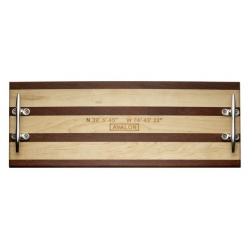 1. Beach Amazonite necklace from Peace of Mind on Etsy: It’s a piece to be treasured with a sweet little charm that hangs on an 18″ sterling silver ball chain with a lobster style clasp. Also, $10 from the sale of each necklace will be donated to the Whale and Dolphin Conservation Society.
1. Beach Amazonite necklace from Peace of Mind on Etsy: It’s a piece to be treasured with a sweet little charm that hangs on an 18″ sterling silver ball chain with a lobster style clasp. Also, $10 from the sale of each necklace will be donated to the Whale and Dolphin Conservation Society.
2. Cutting board from Waypoint (pictured): This sturdy piece features the coordinates of ‘where you want to be’ and is made of solid maple and mahogany. It makes an interesting decoration or is perfect for serving appetizers. The double cleat board features two stainless steel 5” Herrschoff nautical cleats and measures approximately 8″ x 20″. This classic piece was a big hit as a recent gift for my father-in-law who has a cottage in Falmouth, UK. Made in the USA.
3. Driftwood hat or coat rack from nestibles on Etsy: Check out this sturdy, repurposed, shabby chic hook set for your entryway. The wood was collected from Long Island Sound and was sanded with a yellow paint wash.
4. Horseshoe crab pillow from Outer Banks Trading Group: It’s a hand sewn 14″ x 24″ pillow printed with environmentally friendly pigment ink on an organic cotton/hemp blend with a knife edge. Made in the USA.
5. Marine rope doormat from Gaiam: This durable doormat, made from reclaimed lobster trap float ropes, is resistant to mildew and indestructible. It’s 33” x 20½” and is available with the options of black/teal and blue/green, although they vary because the availability is based upon the float ropes traded in by the Maine lobstermen.
6. Messenger bag from United By Blue: This bag is perfect for any beach adventure. It’s made of 100% organic cotton and United By Blue removes 1 pound of trash from our oceans and waterways around the world for every item sold.
7. Salts of the world from Uncommon Goods: Six varieties of exotic salts for presentation or cooking. It’s set in a groovy and stylish rack made of reclaimed cedar. The salts are from around the world but the tubes are made in the USA.
8. Tumblers from Tervis: These sturdy insulated cups keep hot drinks hot and cold drinks cold by harnessing air and sport all sorts of designs from the Maryland blue crab to your alma mater. Made in the USA.
Check out these fun finds for the kids:
1. 10 Little Rubber Ducks by Eric Carle
2. Lionfish puzzle from Fat Brain Toys
3. Sea life bath puzzle from Abe’s Market
4. Sea plane from Green Toys
These are just some ideas if you’re sitting at your desk shopping. But, why not get out there are check out the gift shop at your local nature center?
Ho, ho, ho! Look who’s coming to town … it’s the bearded seal!
Posted: December 12, 2012 Filed under: Animal Homes, Biodiversity, Marine Mammals, Marine Science | Tags: Arctic, Bearded seal, marine mammals, National Oceanic and Atmospheric Administration, NOAA Protected Resources, Polar Regions Leave a commentThe rather short snout with thick, long, white whiskers gives this true seal it’s appropriate common name. The bearded seal (Erignathus barbatus) can be as long 8 feet and weigh up to 800 pounds. I guess now we know what idiom they use under the sea instead of “the 800 pound gorilla in the room …”. These seals tend not to be seen in packs like their more social counterparts we view along harbors.
Bearded seals spend most of their lives in the Arctic waters, although one was recently found in southeast Florida. They enjoy feasting on arctic cod, shrimp, clams, crabs, and octopus and have been known to live up to 25 years. For more information on the conservation efforts and status of the bearded seal population please check out this page created by the NOAA Fisheries Service Office of Protected Resources.
Image (c) http://www.telegraph.co.uk

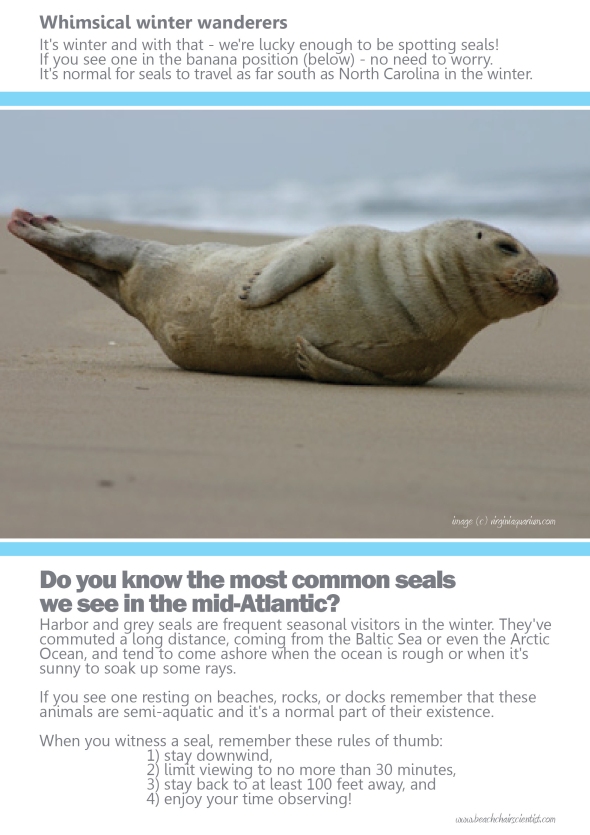

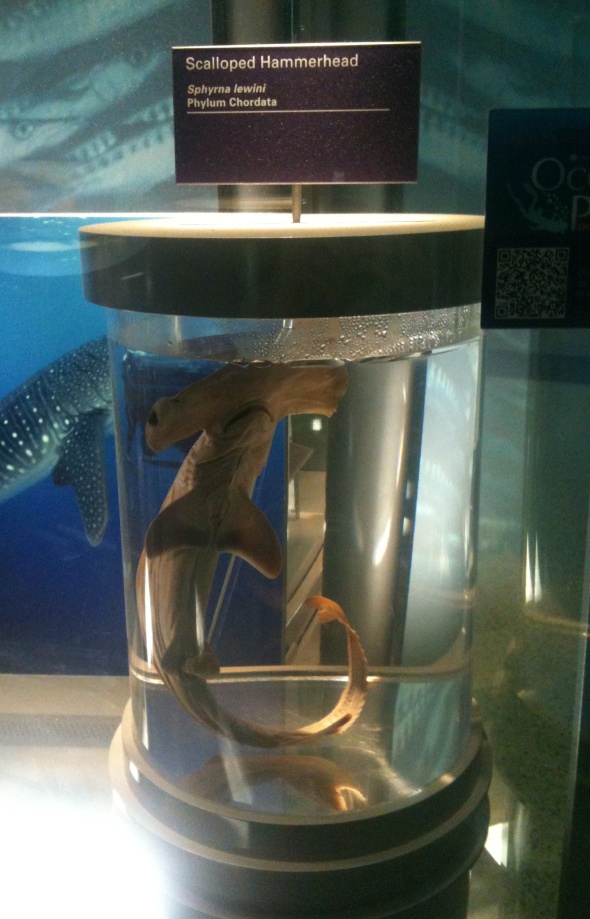
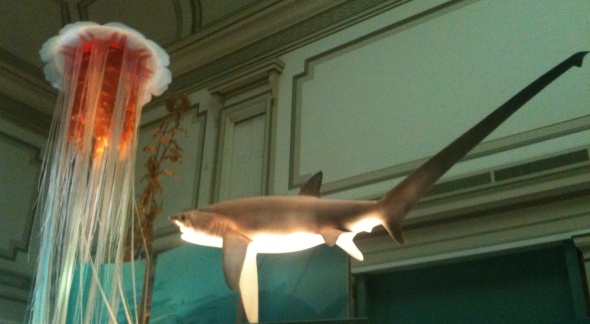


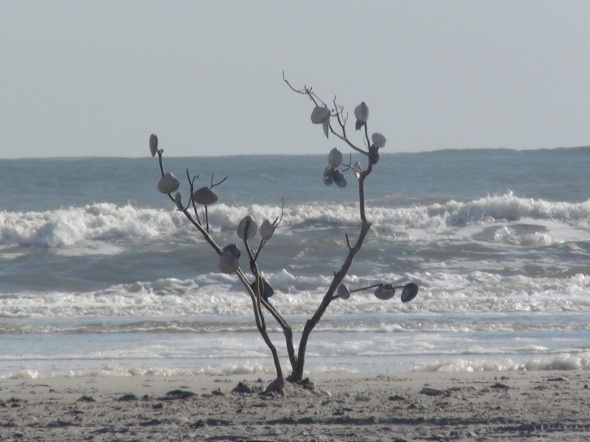







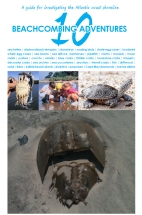

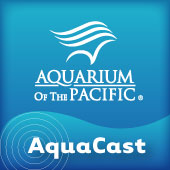

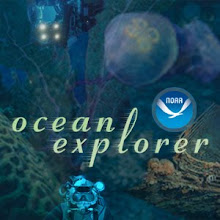
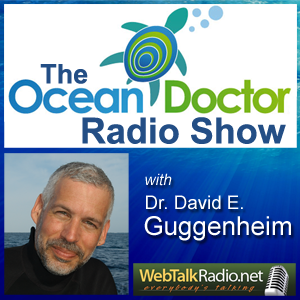













What people are saying …